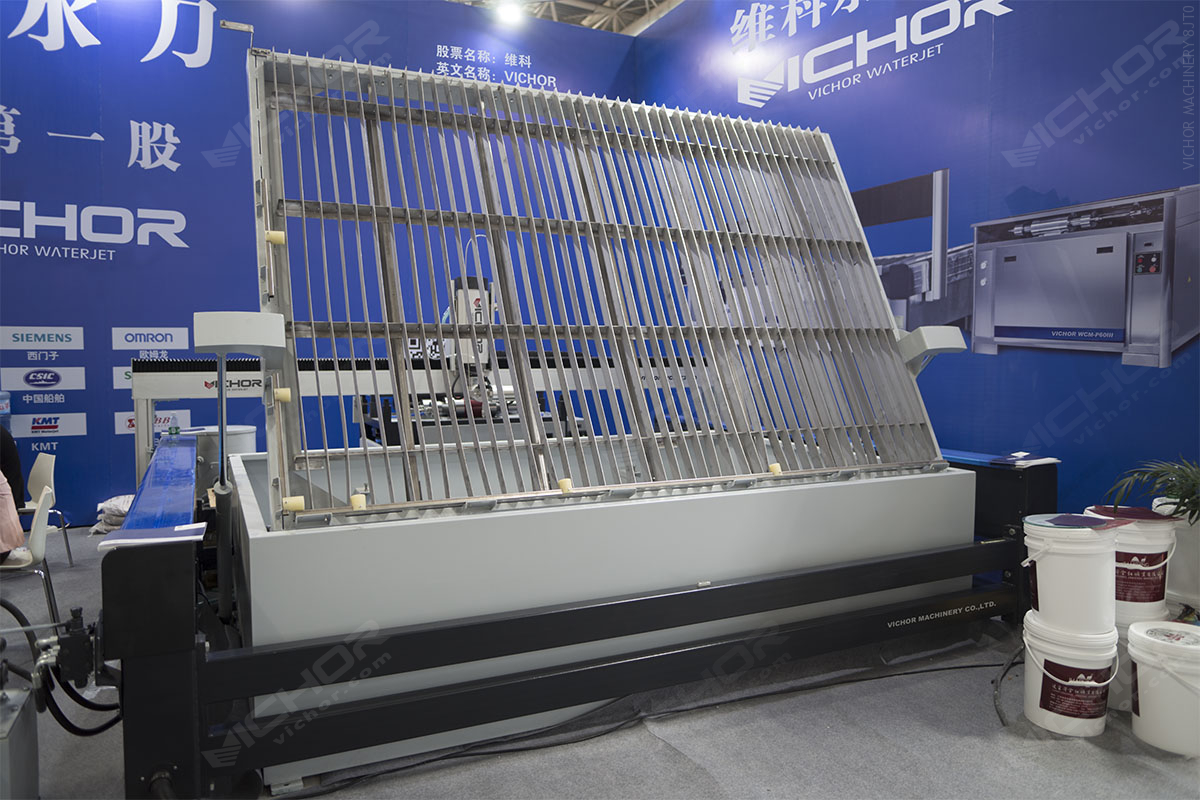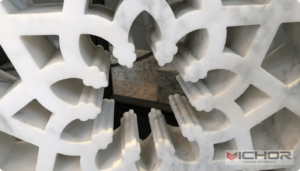
5 Unbeatable Advantages of Water Jet Cutting Marble for Flawless Results
Marble, with its timeless elegance and unique veining, has captivated architects, artists, and homeowners for millennia. Transforming this beautiful, yet challenging, natural stone into precise shapes and intricate designs traditionally demanded significant effort, generated excessive waste, and risked damaging the material. Enter water jet cutting marble – a revolutionary technology that has redefined precision stone fabrication. This article delves deep into the five key advantages that make water jet cutting marble the superior choice for achieving flawless results.
1. Unparalleled Precision and Complex Detail (The Artisan’s Digital Chisel)
One of the most compelling reasons for choosing water jet cutting marble is its extraordinary precision. Unlike traditional saws or routers, which can wander or create wide kerfs (the material removed by the cut), a waterjet stream is incredibly focused, typically ranging from 0.020″ to 0.050″ (0.5mm to 1.3mm) in diameter.
Sub-Millimeter Accuracy: Waterjet systems guided by advanced CNC (Computer Numerical Control) technology can achieve remarkable tolerances, often within ±0.003″ to ±0.005″ (±0.076mm to ±0.127mm). This means components fit together perfectly, whether it’s complex mosaic tiles, intricate inlays, or precisely dimensioned countertop sections.
Intricate Geometries Made Easy: The waterjet has no physical tool to break or wear down during intricate maneuvers. It effortlessly cuts sharp inside corners, complex curves, delicate fretwork, lettering, logos, and even highly detailed pictorial representations directly into the marble slab. Designs limited only by imagination (and CAD software) become feasible with water jet cutting marble.
Minimal Kerf Waste: The narrow cutting stream significantly reduces the amount of valuable marble turned into dust compared to blade cutting. This precision translates directly to material savings, especially crucial for expensive or rare marble varieties.
Perfect for Joinery: The accuracy ensures tight-fitting seams for sink cutouts, edge profiles meeting precisely, and components that assemble flawlessly in architectural installations or bespoke furniture.
2. Zero Heat-Affected Zone (HAZ) – Preserving Marble’s Integrity
Marble, like all natural stone, is sensitive to heat. Traditional thermal cutting methods (like plasma or laser) generate intense localized heat during the cutting process. This heat can cause significant problems:
Micro-Fracturing and Weakness: The sudden heating and cooling can create micro-cracks along the cut edge, weakening the material structurally. This is disastrous for load-bearing elements or thin sections.
Discoloration and Burning: Heat can scorch or discolor the marble, particularly affecting calcite-rich stones, leaving unsightly brown or yellow marks along the cut line that are often impossible to remove without re-cutting.
Altered Crystal Structure: Extreme heat can alter the crystalline structure near the cut, potentially affecting the stone’s polishability or long-term durability.
Water jet cutting marble is fundamentally a cold-cutting process. The abrasive-laden water stream erodes the material through mechanical action alone, generating negligible heat. This means:
Structurally Sound Edges: The inherent strength of the marble is preserved along the cut line, free from heat-induced micro-cracking. The edge remains as strong as the parent material.
Pristine, Unmarked Surfaces: No thermal discoloration, burning, or hazing occurs. The natural color and veining of the marble remain perfectly intact right up to the very edge of the cut.
No Structural Degradation: The integrity of the marble’s crystalline structure is maintained, ensuring optimal performance and longevity.
3. Versatility in Design: Unleashing Creativity Without Limits
The capabilities of water jet cutting marble extend far beyond simple straight lines or curves. It unlocks a level of design freedom previously unattainable with conventional stone-cutting tools.
True 3D Cutting Capability: While primarily used for 2D profiling, modern 5-axis waterjet systems can tilt the cutting head, enabling the creation of complex bevels, chamfers, and even true 3D contours directly on the marble piece. This eliminates secondary machining steps for many edge details.
Internal Cutouts & Piercings: Starting a cut in the middle of a slab is simple for a waterjet – just pierce through with the high-pressure stream. This allows for creating complex internal cutouts, decorative screens, or intricate patterns without needing to start from an edge.
Multi-Thickness Handling: Waterjets can effectively cut through varying thicknesses within the same job, accommodating natural variations in slab thickness or complex multi-layer designs.
Combining Materials: Waterjets excel at cutting stacks of material (“nesting”) or cutting multiple different materials simultaneously on the same table. Imagine perfectly aligned cuts for marble combined with metal inlays or backing materials, all done in one setup.
Prototyping and One-Offs: The ease of programming from CAD files makes water jet cutting marble ideal for prototypes, custom architectural features, unique art pieces, or small batch production runs without the need for expensive custom tooling.
4. Material Conservation and Reduced Waste (The Sustainable Edge)
In an era of increasing material costs and environmental consciousness, the efficiency of water jet cutting marble is a major advantage.
Nesting Optimization: Advanced CAD/CAM software allows for highly efficient nesting of parts on a marble slab. Parts of different shapes and sizes can be arranged like a puzzle to maximize material utilization, significantly reducing offcuts compared to less flexible cutting methods constrained by straight lines or large tool radii.
Reduced Kerf Loss: As mentioned earlier, the narrow waterjet stream removes far less material than a diamond blade, meaning more usable stone per slab.
Salvaging Smaller Pieces: The precision and ability to cut intricate shapes allows fabricators to utilize smaller leftover pieces of marble for intricate decorative elements, tiles, or accents that would otherwise be discarded.
Lower Yield Loss from Errors: The precision of CNC water jet cutting marble minimizes the risk of costly cutting errors that render large, expensive slabs unusable. What is cut is almost always exactly what was designed.
Abrasive Recycling: Modern waterjet systems increasingly incorporate abrasive recycling technologies. Garnet sand, the primary abrasive used, can often be reclaimed and reused multiple times, reducing both material costs and the environmental footprint associated with mining and transporting new abrasive.
5. Environmentally Friendlier and Operator-Safe Process
Compared to many traditional stone fabrication methods, water jet cutting marble offers significant environmental and safety benefits.
No Hazardous Fumes or Dust: Unlike methods that generate silica dust (a severe respiratory hazard) or involve chemical coolants, waterjet cutting primarily produces a slurry of water, spent abrasive, and marble particles. While proper slurry containment and disposal are necessary (often involving settling tanks), it eliminates airborne silica dust risks in the cutting area. Closed-loop water systems can also minimize water consumption.
Reduced Noise Pollution: Waterjet cutting is significantly quieter than large diamond blade saws or routers, creating a better working environment.
Lower Energy Consumption (Compared to Lasers): While high-pressure pumps require energy, waterjets generally consume less power than industrial laser systems capable of cutting similar thicknesses.
Safer Operation: Operators are primarily shielded from the high-pressure stream by the machine’s enclosure. The absence of high heat, flying sparks (like in plasma), or significant blade kickback hazards enhances workplace safety. Handling involves managing heavy slabs and the abrasive slurry, not the inherent dangers of high-speed rotating blades or extreme heat sources.
Reduced Water Usage (Modern Systems): Advanced systems utilize high-efficiency pumps and can recirculate water within the cutting table, minimizing overall water consumption compared to older designs.
The evolution of water jet cutting marble has transformed the possibilities for working with this magnificent natural stone. Its cold-cutting nature preserves the marble’s beauty and strength like no other method. The unparalleled precision enables feats of intricate detail and perfect fitment previously unimaginable. The design freedom it unlocks empowers architects, designers, and artists to push creative boundaries. Furthermore, its efficiency in material usage and its comparatively cleaner, safer operational profile make it not just a technologically superior choice, but also a more sustainable and responsible one.
Whether crafting a one-of-a-kind sculpture, precision countertops with complex sink cutouts and drain boards, intricate architectural screens, detailed inlays, or perfectly fitting tiles, water jet cutting marble delivers consistently flawless results. For demanding applications where precision, material integrity, complex design, and efficiency are paramount, waterjet technology has firmly established itself as the modern standard, turning the challenges of cutting hard stone into opportunities for unparalleled craftsmanship. When flawless marble fabrication is the goal, the advantages of water jet cutting marble are truly unbeatable.
continue reading




